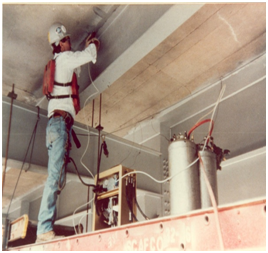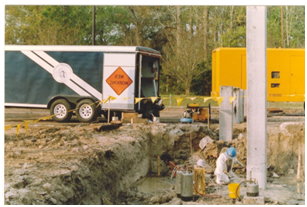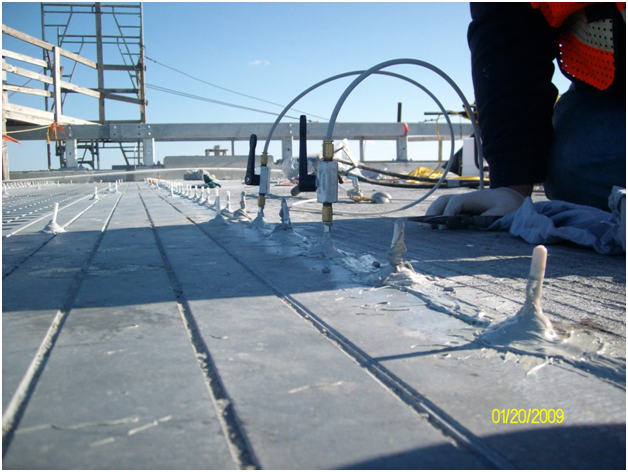Industries Served
- Corps Of Engineer
- Industrial
- Nuclear Power
- Municipal
- Water Treatment
- Commercial Construction
- Offshore Platforms
- Port & Dock Repairs
- Food & Beverage
- Manufacturing
- Cooling Tower Basins
- Storage Tank Liners
- DOTD
- Railroad Trussels
Epoxy Injection
Cracks in concrete structures are caused by a variety of contributing factors. They may affect the appearance only, or they may indicate significant structural distress and lack of durability. They may represent the full extent of the damage or they may be signs of problems of much greater magnitude.
 The significance of these cracks will depend on the type of structure as well as the cause and nature of the cracking. To specify the proper repair of a cracked concrete structure, one must evaluate the cause and design a repair procedure that takes these causes into account. A successful long-term repair procedure must attack the cause as well as the cracks themselves. Epoxy injection is a common procedure used to repair cracks in concrete structures ranging in width from .002″ up to 3/8″.
The significance of these cracks will depend on the type of structure as well as the cause and nature of the cracking. To specify the proper repair of a cracked concrete structure, one must evaluate the cause and design a repair procedure that takes these causes into account. A successful long-term repair procedure must attack the cause as well as the cracks themselves. Epoxy injection is a common procedure used to repair cracks in concrete structures ranging in width from .002″ up to 3/8″.
There are specific formulations of epoxy resin designed for cracks of various widths. The selection of the epoxy resin related to the width of the crack void is a critical issue.
 Epoxies that will work well in cracks measuring .060″ will tend to crystallize if used in cracks greater than .250″. Epoxies are formulated with specific fillers to allow for penetration of small cracks and low exotherm for larger cracks. In the larger cracks, the heavier viscosities (from heavy motor oil through viscosity’s resembling paste) are recommended to control internal exotherm and crystallization cracking within the epoxy system during the curing process. Once the proper repair has been made, the original crack is now usually three times stronger than the concrete itself.
Epoxies that will work well in cracks measuring .060″ will tend to crystallize if used in cracks greater than .250″. Epoxies are formulated with specific fillers to allow for penetration of small cracks and low exotherm for larger cracks. In the larger cracks, the heavier viscosities (from heavy motor oil through viscosity’s resembling paste) are recommended to control internal exotherm and crystallization cracking within the epoxy system during the curing process. Once the proper repair has been made, the original crack is now usually three times stronger than the concrete itself.

Call Python for a free inspection and consultation to address your concrete problem. We will be happy to arrange for one of our professionals to make an appointment and fix those problems once and for all, we guarantee it.
Call Python today.
Copyright © Python




